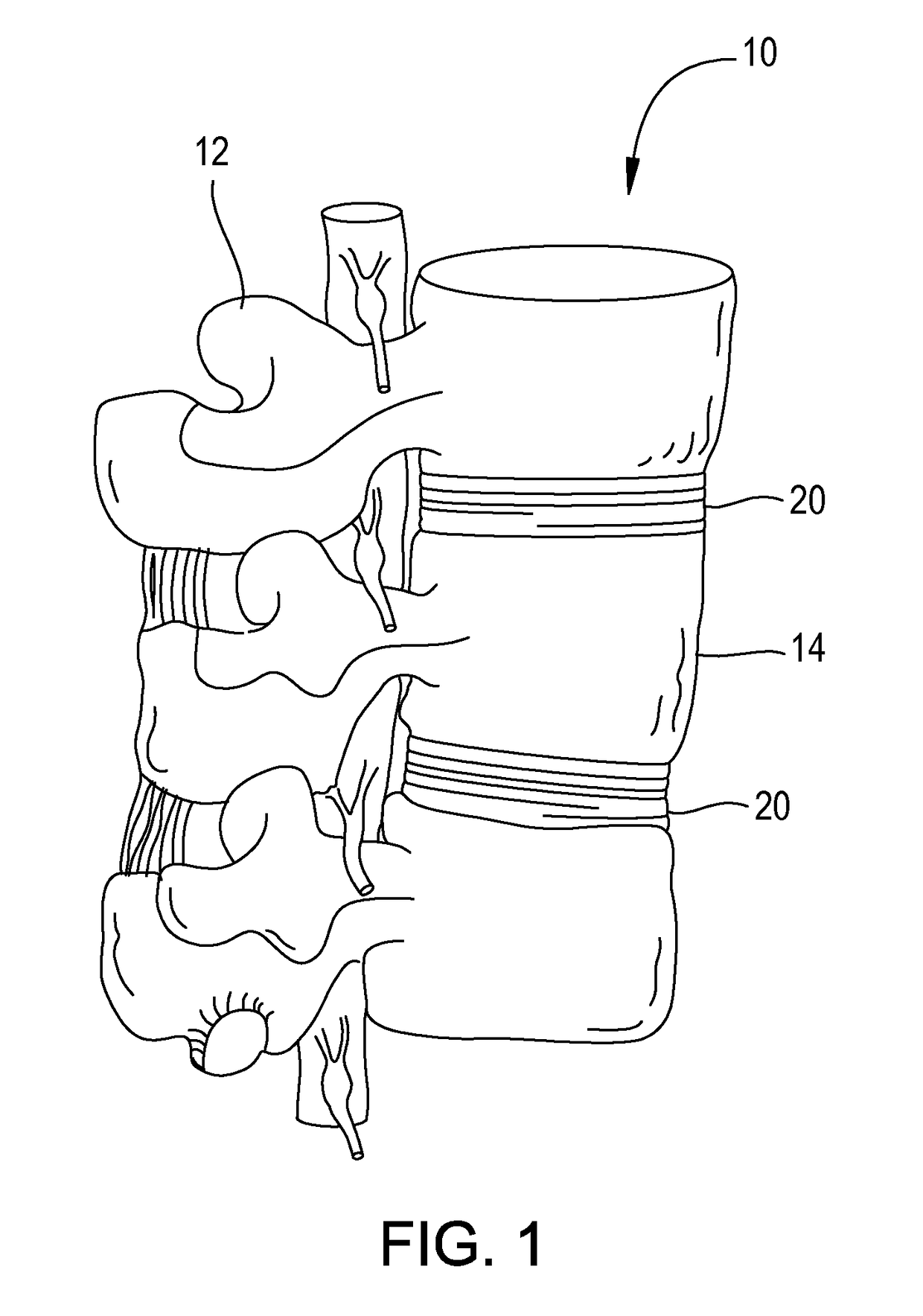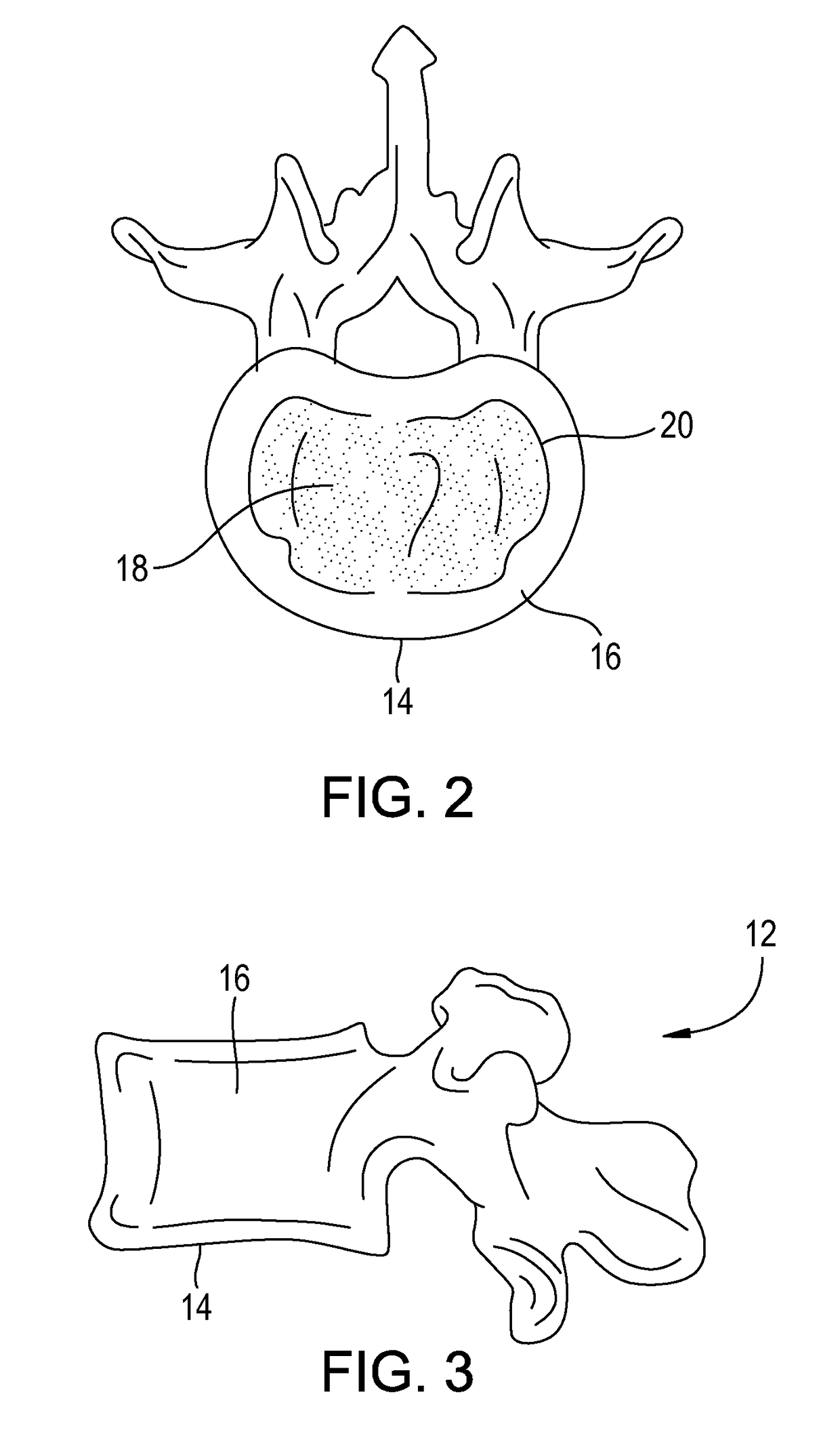Anterior lumbar fusion method and device
a lumbar fusion and anterior lumbar fusion technology, applied in the field of anterior lumbar fusion methods and devices, can solve the problems of limited size and shape of implants, failure of implants, weakening of vertebrae, etc., and achieves the effect of reducing the contact surface area, and reducing the risk of fractur
- Summary
- Abstract
- Description
- Claims
- Application Information
AI Technical Summary
Benefits of technology
Problems solved by technology
Method used
Image
Examples
Embodiment Construction
[0033]As FIG. 1 shows, the spinal column 10 includes a number of uniquely shaped bones, called the vertebrae 12. The number of vertebrae 12 that make up the spinal column 10 depends upon the species of animal. In a human there are twenty-four vertebrae 12, including seven cervical vertebrae, twelve thoracic vertebrae and five lumbar vertebrae.
[0034]As FIGS. 1 to 3 show, each vertebra 12 includes a vertebral body 14, which extends on the anterior (i.e., front or chest) side of the vertebra 12. As FIGS. 1 to 3 show, the vertebral body 14 is in the shape of an oval disk. Referring to FIG. 2, the vertebral body 12 includes an exterior formed from compact cortical bone 16. The cortical bone 16 encloses an interior volume of reticulated cancellous, or spongy, bone 18 (also called medullary bone or trabecular bone) and is raised to form a lip that encircles the cancellous bone. A “cushion,” called an intervertebral disk 20, is located between vertebral bodies 14.
[0035]FIGS. 4 to 10 illustr...
PUM
 Login to View More
Login to View More Abstract
Description
Claims
Application Information
 Login to View More
Login to View More - R&D
- Intellectual Property
- Life Sciences
- Materials
- Tech Scout
- Unparalleled Data Quality
- Higher Quality Content
- 60% Fewer Hallucinations
Browse by: Latest US Patents, China's latest patents, Technical Efficacy Thesaurus, Application Domain, Technology Topic, Popular Technical Reports.
© 2025 PatSnap. All rights reserved.Legal|Privacy policy|Modern Slavery Act Transparency Statement|Sitemap|About US| Contact US: help@patsnap.com



